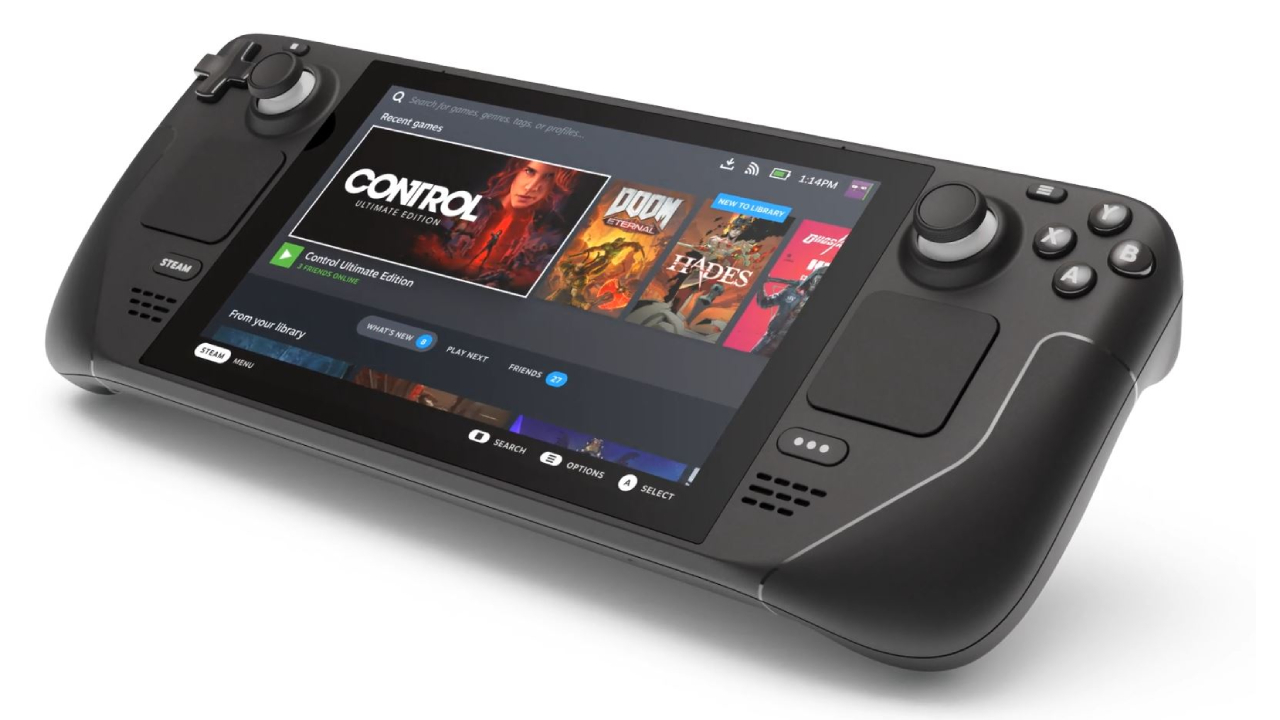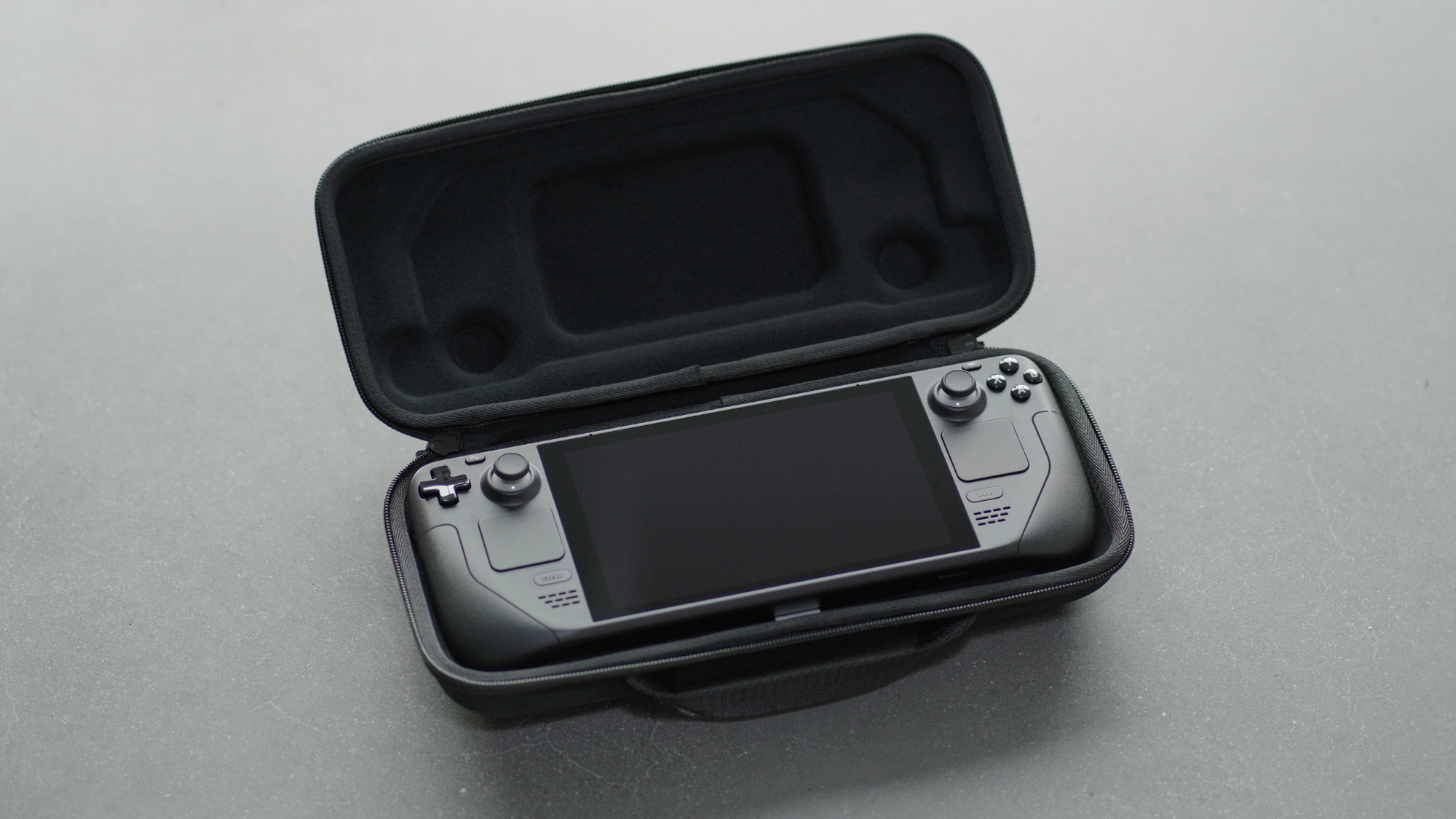I won't buy a Steam Deck until Valve fixes these issues
Opinion: Steam Deck is impressive, but I'm still not convinced

After several months of delay, the Steam Deck is finally due to arrive on February 25 for those who were able to pre-order the console. Valve’s latest venture into gaming hardware is expected to toe the line between PC and handheld consoles, allowing gamers to enjoy their Steam library on the go.
But as tempting as a portable gaming PC may sound, in practical terms, the upcoming device has too many red flags for me to really consider buying one anytime soon.
Before I have the chance to antagonize any early adopters, let me preface this by saying that I truly believe that what Valve has been able to achieve with the Steam Deck is incredible. Less than a decade ago, having the opportunity to play PC games on a handheld device seemed like a pipedream. Now we’re just days away from being able to do just that.
Still, as someone who’s keen for something that meets my specific lifestyle needs, I’ve decided to bide my time and wait until either Valve or its competitors come up with a solution to the issues I’ve outlined below.
The battery life sounds like a major dealbreaker

Judging by early previews, the Steam Deck seems to have significant issues with its battery life. Several YouTube channels such as GamersNexus and ThePhawx have already had the opportunity to test out the Steam Deck and found that they were only able to get around 85-90 minutes out of the device before it ran out of juice.
It’s important to note that both content creators tested the Steam Deck on rather graphically-demanding games with an uncapped frame rate and VSync disabled. However, even setting a limit of 60fps and switching on VSync seemed to add an average of 30 minutes of game time. This is obviously disappointing since this means that both reviewers seemed to only reach the lower range of Valve’s claims of battery life of two to eight hours.
This doesn’t come as a complete shock considering the Steam Deck’s internals. After all, the handheld computer needs to be powerful enough to run most PC games flawlessly, and processing power like that demands some serious juice. Still, this is a big problem for a device that markets primarily itself as a portable gaming PC.
Sign up for breaking news, reviews, opinion, top tech deals, and more.
As revolutionary as it may be, I’m not too keen on paying at least $400 for something that would confine me to the nearest electric plug. And compared to the Nintendo Switch OLED, which boasts approximately 4.5 to 9 hours of battery life, it’s a dramatic difference.
There’s a myriad of reasons that could contribute to the device’s reportedly poor battery life. It’s very possible that this issue could to some extent be down to unpatched software issues that are very commonly found in early testing units. While it's unlikely that the retail units will offer a significant jump in battery life, it’s not unreasonable to think that some software improvements will be made in the run-up to the device’s release.
It’s too bulky for daily commutes

Another issue that pushes me away from the Steam Deck is that it’s simply too big to comfortably use outside of the house. The bulky handheld computer is 11.7 inches in length and 4.6 inches in width, making it almost as long as two PS5 DualSense controllers held together side by side. It also weighs approximately 635 grams (1.4lbs), which is significantly heavier than your average iPad and 215 grams heavier than the Nintendo Switch OLED.
ThePhawx YouTube channel took the liberty of comparing the Valve Steam Deck to various other handheld devices, including the original PSP and the Nintendo Game Boy Advance SP. However, the most appropriate comparison seems to be the Nintendo Switch OLED:
Here’s the #steamdeck next to the Switch OLED. pic.twitter.com/kbGF9exbe0February 4, 2022
For most people, using the Steam Deck in the comfort of their home or car will be a non-issue. However, as a London-based commuter, just the thought of using the device on my early morning journey to the office is daunting considering how difficult it would be to hold in the middle of a packed train carriage. Personally, I even find that the Nintendo Switch OLED is a bit too large to carry on a commute. In that regard, the affordable Nintendo Switch Lite is much more suitable.
The Nintendo Switch just does it better

Size aside, there’s several other reasons why the Steam Deck should look to the Nintendo Switch for inspiration. Of course, the Switch and the Steam Deck are not comparable in terms of gaming libraries and overall technical specifications. The Steam Deck is a relatively powerful gaming PC repackaged in a miniature format, while the Switch is much more akin to a classic handheld console. Both devices are also targeted towards completely different gaming audiences.
However, in terms of practicality and comfort, the Nintendo Switch and its accompanying Joy-Con controllers are simply unmatched by any other portable device that has been introduced in recent generations of gaming hardware. The console may not be perfect - and the common issue of Joy-Con drift can attest to this - but the Nintendo Switch is something I believe the Steam Deck can draw lessons from. After all, there’s a reason as to why the Switch became the fastest console to reach the 100 million sales mark.
Let’s wait and see

By no means am I discouraging others from ordering and enjoying the Valve Steam Deck. It’s just that I personally prefer to wait for more advanced models to hit the market rather than purchasing something that doesn’t quite meet my expectations. And with the rate of technological advancement, it’s unlikely that I’ll have to wait very long.
Just recently, it’s been reported that AMD’s FidelityFX Super Resolution feature has been implemented into the Steam Deck. This means that individual games can be rendered in a lower resolution before upscaling the image, allowing the device to conserve power as a result.
Though it’s unclear as to the extent to which this could solve the Steam Deck’s battery life issues, the Nintendo Switch has shown that positive changes can happen in this area. The original Switch model only offered 2.5 to 6.5 hours of battery life, which was later improved in the 2019 models.
Over time, we’re also likely to see a more refined system come to market if the Steam Deck is a moderate success. Similar to the evolution of the Nintendo DS to the Nintendo DS Lite, there’s a high probability that the next version of the Steam Deck (or a third-party take) could solve many of the problems I have with Valve’s bulky system, and I’m willing to wait until then.
- Steam Deck vs Nintendo Switch OLED: which handheld comes out on top?

Ilyas is a freelance writer and technology communications specialist based in London, United Kingdom. On the rare occasion that he’s not working, you can find him either binge-watching the Marvel Cinematic Universe or doom-scrolling on Twitter. You can reach him anytime at ilyas@snackable.tech.